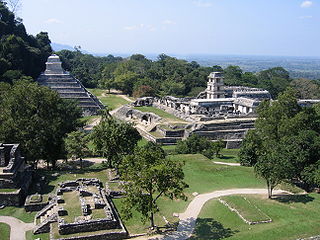The 700s decade ran from January 1, 700, to December 31, 709.
The 610s decade ran from January 1, 610, to December 31, 619.
The 630s decade ran from January 1, 630, to December 31, 639.
The 680s decade ran from January 1, 680, to December 31, 689.
The 690s decade ran from January 1, 690, to December 31, 699.
The 560s decade ran from January 1, 560, to December 31, 569.
The 580s decade ran from January 1, 580, to December 31, 589.
The 590s decade ran from January 1, 590, to December 31, 599.

Year 635 (DCXXXV) was a common year starting on Sunday of the Julian calendar. The denomination 635 for this year has been used since the early medieval period, when the Anno Domini calendar era became the prevalent method in Europe for naming years.
Year 524 (DXXIV) was a leap year starting on Monday on the Julian calendar. In the Roman Empire, it was known as the Year of the Consulship of Iustinus and Opilio. The denomination 524 for this year has been used since the early medieval period, when the Anno Domini calendar era became the prevalent method in Europe for naming years.

Year 610 (DCX) was a common year starting on Thursday of the Julian calendar, the 610th year of the Common Era (CE) and Anno Domini (AD) designations, the 610th year of the 1st millennium, the 10th year of the 7th century, and the 1st year of the 610s decade. The denomination 610 for this year has been used since the early medieval period, when the Anno Domini calendar era became the prevalent method in Europe for naming years.

Year 684 (DCLXXXIV) was a leap year starting on Friday of the Julian calendar. The denomination 684 for this year has been used since the early medieval period, when the Anno Domini calendar era became the prevalent method in Europe for naming years.

Year 702 (DCCII) was a common year starting on Sunday of the Julian calendar, the 702nd year of the Common Era (CE) and Anno Domini (AD) designations, the 702nd year of the 1st millennium, the 2nd year of the 8th century, and the 3rd year of the 700s decade. The denomination 702 for this year has been used since the early medieval period, when the Anno Domini calendar era became the prevalent method in Europe for naming years.
Year 615 (DCXV) was a common year starting on Wednesday of the Julian calendar. The denomination 615 for this year has been used since the early medieval period, when the Anno Domini calendar era became the prevalent method in Europe for naming years.

Year 692 (DCXCII) was a leap year starting on Monday of the Julian calendar. The denomination 692 for this year has been used since the early medieval period, when the Anno Domini calendar era became the prevalent method in Europe for naming years.

Year 900 (CM) was a leap year starting on Tuesday of the Julian calendar.

Year 599 (DXCIX) was a common year starting on Thursday of the Julian calendar. The denomination 599 for this year has been used since the early medieval period, when the Anno Domini calendar era became the prevalent method in Europe for naming years.

Year 595 (DXCV) was a common year starting on Saturday of the Julian calendar. The denomination 595 for this year has been used since the early medieval period, when the Anno Domini calendar era became the prevalent method in Europe for naming years.
Yohl Ikʼnal, also known as Lady Kan Ik and Lady Kʼanal Ikʼnal, was queen regnant of the Maya city-state of Palenque. She acceded to the throne on 23 December 583, and ruled until her death.
The 600s decade ran from January 1, 600, to December 31, 609.








